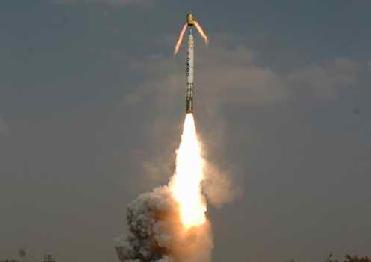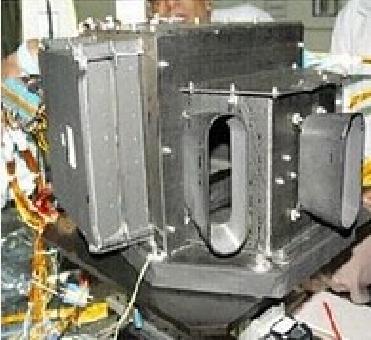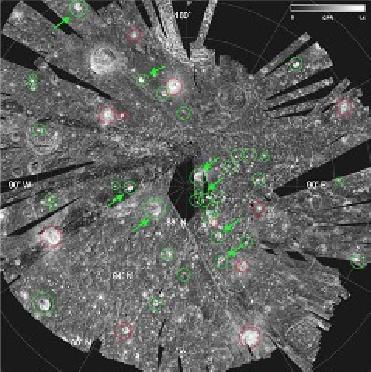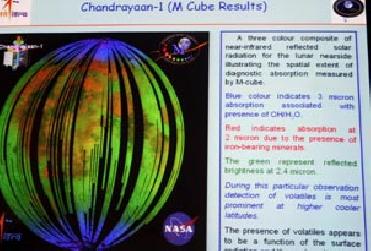
Moon Impact Probe (MIP) will be ejected from the spacecraft and will crash land on the moon's surface. ISRO graphic
BANGALORE (BNS): Chandrayaan-1 spacecraft has successfully reached its intended operational orbit at a height of about 100 km from the lunar surface, declared Indian Space Research Organisation on Wednesday.
�This followed a series of three orbit reduction manoeuvres conducted during the past three days by repeatedly firing the spacecraft�s 440 Newton Liquid Engine. As part of these manoeuvres, the engine was fired for a cumulative duration of about sixteen minutes,� an ISRO press statement said.
�As a result of these manoeuvres, the farthest point of Chandrayaan-1�s orbit (aposelene) from the moon�s surface was first reduced from 7,502 km to 255 km and finally to 100 km while the nearest point (periselene) was reduced from 200 km to 182 km and finally to 100 km,� the statement said.
From this operational circular orbit of about 100 km height passing over the polar regions of the moon, it is intended to conduct chemical, mineralogical and photo geological mapping of the moon with Chandrayaan-1�s 11 scientific instruments (payloads).
�Two of those 11 payloads � Terrain Mapping Camera (TMC) and Radiation Dose Monitor (RADOM) � have already been successfully switched ON. TMC has successfully taken the pictures of Earth and moon,� ISRO said.
During the orbit reduction operations, Chandrayaan-1�s liquid engine built by Liquid Propulsion Systems Centre (LPSC), Thiruvananthapuram, has been fired a total of ten times successfully.
In its present operational orbit, Chandrayaan-1 spacecraft takes about two hours to go round the moon once, according to the Indian space agency.
The next major event of Chandrayaan-1 mission planned in the coming days is the release of Moon Impact Probe (MIP) from the spacecraft and its eventual hitting of the moon�s surface.
After its successful launch by PSLV-C11 on October 22 into an initial Earth orbit, Chandrayaan-1 spacecraft proceeded towards moon and successfully entered into an elliptical orbit around the celestial body on November 8.
Since its launch, the spacecraft�s health and orbit have been continuously monitored from the Spacecraft Control Centre of ISRO Telemetry, Tracking and Command Network (ISTRAC) with critical support from antennas of Indian Deep Space Network (IDSN) at Byalalu.
 Previous Article
Previous Article Next Article
Next Article













The Indian Air Force, in its flight trials evaluation report submitted before the Defence Ministry l..
view articleAn insight into the Medium Multi-Role Combat Aircraft competition...
view articleSky enthusiasts can now spot the International Space Station (ISS) commanded by Indian-American astr..
view article